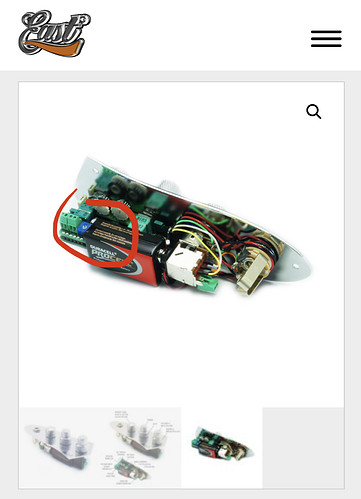I received my new 2021 American Ultra Jazz Bass on Friday, and, as promised in the “Fender Custom Shop” thread, I’m in the process of evaluating it and comparing it to the 2018 Squier VM 70s Jazz Bass.
What are the differences between a $350 bass and a $2000 bass?
Here are some highlights:
Body : both basses weigh just under ten pounds each, measured by holding them while standing on a bathroom scale, then subtracting my own weight. Not the most accurate way to do it, but I measured each at 9.6 pounds. The Squier was advertised at 10.2 pounds.
Both basses have an almost identical body (Squier is maple, Ultra is alder), except that the Ultra has a sculpted neck heel. I tried several times under different lighting to demonstrate the difference between Fender’s ‘Olympic White’ color on the Squier to their ‘Arctic Pearl’ on the Ultra, but was unsuccessful. The Arctic Pearl is a metallic white and is a “whiter” shade of white than the Squier.
Headstock: Both have the same familiar Fender shape, but the Ultra has an extra “string tree” on the A string.
Tuners: Both have “Vintage Style” tuners, but the Ultra has “Lightweight” tuners.
Neck: Both have 34” scale maple necks and 1.5” bone nuts, but the Ultra has an extra fret and a rosewood fingerboard. (I would rather have had a maple fingerboard, but that wasn’t available). Both necks use block inlays. The Ultra has a compound 10”-14” radius, while the Squier is the standard Fender 9.5”, The Squier has a C neck with a glossy finish and skunk stripe, while the Ultra has a modern D neck with a satin finish. The dots on the side of the Ultra neck are a little easier to see than those on the Squier. This is due to the white binding on the edges of the neck. The action on the Ultra was already set low, so no adjustments were needed, while the action on the Squier was very high out of the box.
Accessories: Both came with some Allen wrenches for adjusting truss rod and action, but the Ultra also included a pouch for the tools, and a pair of strap locks to attach to my strap. It also came with a Hardshell Case, while the Squier came in a cardboard box.
EDIT: I used a 13mm socket to secure the strap locks (which appear to be Schaller’s design) to my strap. If I purchase a pair of Schaller strap buttons (approx. $5 from Sweetwater), I could install them on my Squier bass, and would not need to purchase a second strap. 
Truss Road: Adjustable at the headstock on the Squier, and at the last fret on the Ultra.
Bridge: The Ultra has a Hi-Mass bridge. Both are Vintage 4-saddle.
Pickups: Squier has Alnico single coil, Ultra has “Ultra Noiseless” single coil pickups.
Electronics: Squier is passive, Ultra has 18v active/passive electronics ( 2 x 9v batteries in series). This is where the major improvements come into play. I put all my Rumble 100 EQ settings at noon, used zero gain, and turned the OD circuit off. When I set the switch to passive it sounded the same as the Squier (as expected). But when I switched to active, the volume almost doubled. I mean, the pictures were rattling on my walls . . .
It will take me awhile to fully explore the myriad of possible EQ settings on the Ultra, so I really can’t say much more about that (or whether it justifies the extra ~$1600 cost between the two bass guitars), at this time.
Wish me luck and I’ll try to answer any questions you may have.
Cheers
Joe
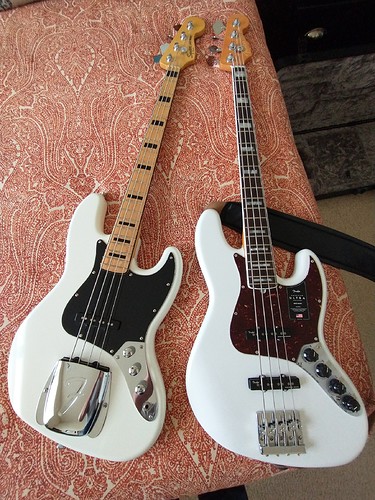
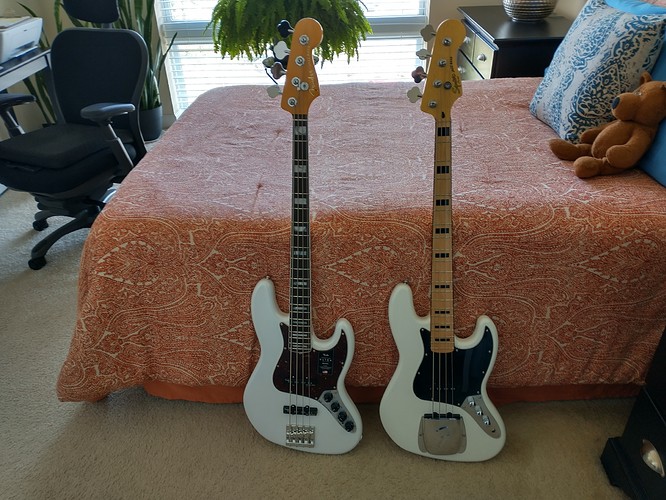

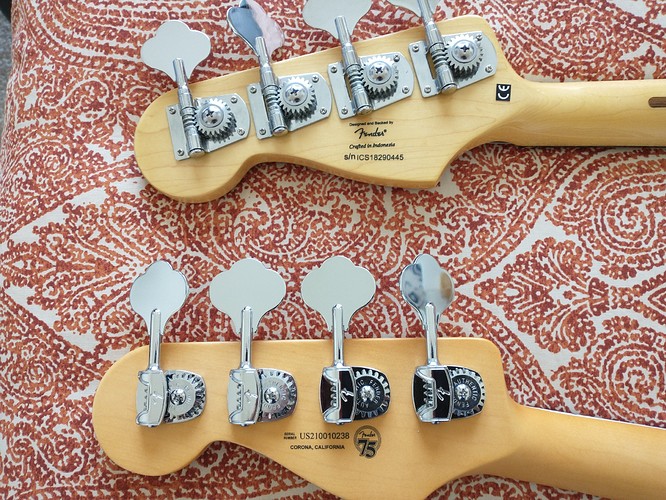
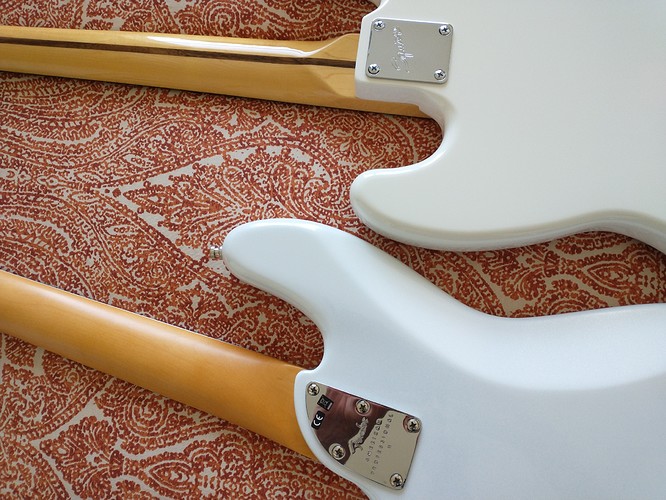
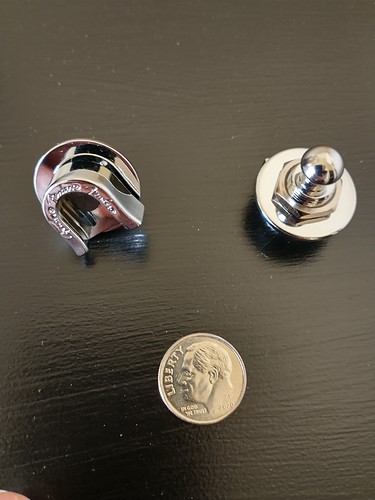
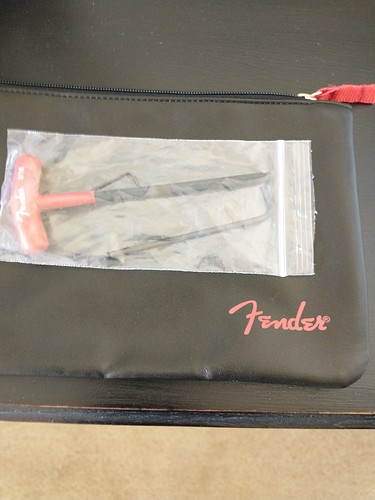
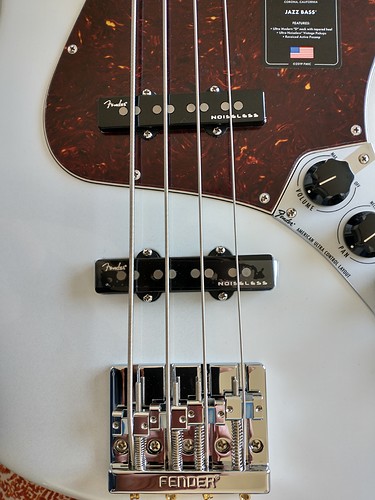

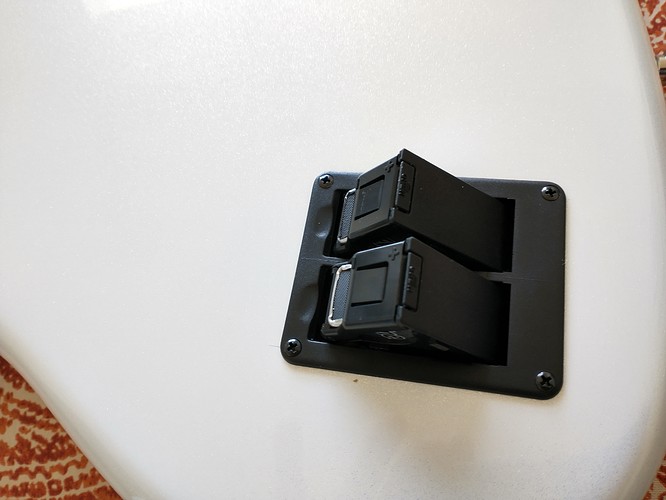
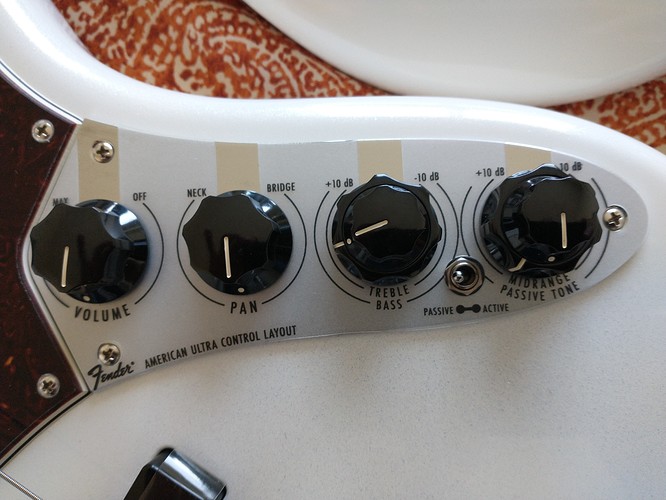
 No pre-amp
No pre-amp